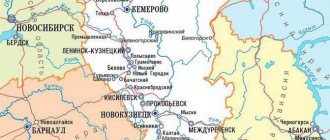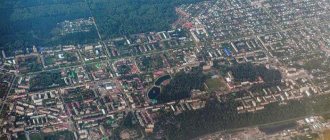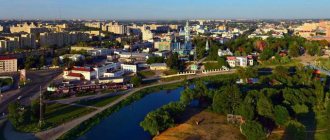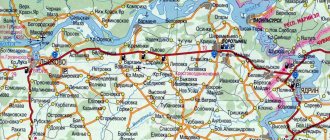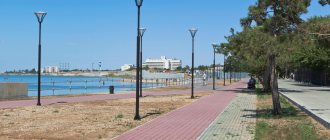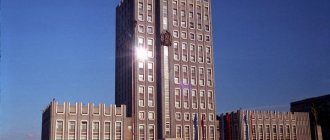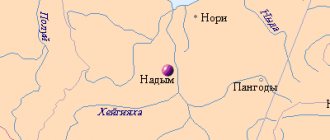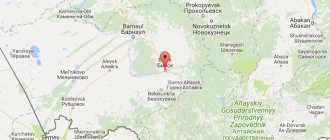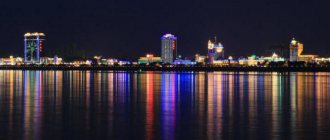The question of where Tambov is located will confuse some people, although the name of the city is well known to every Russian. The city, which has preserved its originality, historical memory, is clean, surrounded by flowers, is considered the most environmentally friendly city in Russia. They call it provincial, but is that a minus in our time? No, that's a big plus.
Where is Tambov located?
Tambov is located in the middle of the East European Plain and belongs to the central Chernozem region. Its border runs with the Voronezh, Lipetsk, Saratov, Penza and Ryazan regions. It can be called the center of European Russia. The region is small in area, only 34,462 square kilometers. Just over one million people live in it, including about 300 thousand in the city of Tambov.
The Tambov region is located in a forest-steppe zone. Its main wealth is black soil. Two rivers flow through the city: Tsna and Studenets, which connect exactly in the place where Tambov is located. From Moscow to the regional center 480 kilometers. A railway passes through the city, connecting it with many centers of Russia. The city has a train station. There are also highways to the center and south of the country, to the Volga region.
Kazan Monastery
Founded in the 17th century by Elder Joseph, the monastery is famous for the tallest bell tower in Russia. By decree of Catherine II, a theological seminary was opened at the monastery. The library stored more than 50 thousand unique books and manuscripts. The temple preserves frescoes made by Italian artists. After several decades of decline, the buildings were restored and the seminary was reopened, where a Sunday school operates.
Location: M. Gorky, 3.
Ascension Monastery
One of the most elegant monasteries in the Tambov region was built in the 17th century in the northern part of the city. The first abbess was Catherine, sister of Pitirim. During its history, the convent burned down, was rebuilt again, closed after the revolution and began its activities again. The icon of the Kazan Mother of God was kept within its walls; later it was transferred to the Shatsk Vyshenskaya Hermitage.
Address: Moskovskaya, 37.
Population of the Wild Field
The lands where Tambov and many ancient cities are located are located on the territory that was once called the Wild Field. These were uncultivated fertile steppes, suitable for agriculture and practically uninhabited. Raids by nomadic tribes prevented the development of these places, located on the border with Russia. Part of the Wild Field was under the control of the Don, Dnieper and Khoper Cossacks, but this was not enough. Decisive measures were needed on the part of the state to protect the population from the attacks of nomads.
These measures included the construction of defensive structures: fortresses, earthen ramparts, fences and ditches. A guard and village service was organized. In the built fortresses and along the line of defense there was a settlement of service people. Thus, modern cities were founded: Voronezh, Orel, Yelets, Belgorod, Volgograd, Penza, Rostov, Lugansk, Donetsk, Kharkov, Kirovograd, Sumy, Nikolaev, Poltava and many others.
Parks
Green islands of calm and unity with nature are scattered throughout the city, 2 of them are considered the largest.
Park of Culture and Recreation
A great place for family fun. Amusement rides, a Ferris wheel, swings, playgrounds and shady alleys await visitors. You can sit in a cafe with a cup of coffee and watch children play on picturesque paths and around colorful flower beds.
Address: Sovetskaya, 99.
Victory Park
At the entrance, visitors are greeted by an airplane heading into the sky. On the territory there is a monument to a veteran, an artistic fountain with light and music design and several samples of military equipment. It opened on the occasion of the half-century anniversary of the victory over Nazi Germany.
Location: st. Michurinskaya.
History of education
The city of Tambov is relatively young. The date of its formation is considered to be 1636. At this time, on a hill located at the confluence of the Tsna and Studenets rivers, where Tambov is currently located, a fortress was founded that protected the borders of Russia from raids by the Nogais and Crimean Tatars. It was no coincidence that the fortress was located in the Wild Field area. It was a practically uninhabited territory, without any borders, where settlers from Russia went.
The construction of the fortress was led by governor Roman Boborykin. The location chosen for construction was excellent; it seemed that nature itself was protecting the structure from uninvited guests. A ditch was dug from the side of the rivers, which rested its ends against them, from where water flowed into it. Six-meter-high walls made of oak logs were built on three unprotected sides. The fortress garrison numbered up to 1000 people.
origin of name
There are two main versions of the origin of the name of the city of Tambov. The city's population adheres to the second option. The first version is historical. According to linguistic analysis of the word “Tambov”, it comes from the Moksha name of the supposed site of construction of the “Tonbov” fortress. This is what the locals called the river, on the banks of which they began to build fortress walls. When translated from Moksha, the word means “pool.” The second version is legendary. According to local legends, enemy raids on the fortress always ended in failure. Therefore, the nomads, although they expected defeat, justified their failure with loud cries of “God is there!”
Development of Tambov in the 18th century
The place where the city of Tambov is located has long been famous for its fertile soils. Gradually this land became the breadbasket of Russia. High harvests allowed local merchants to trade in grain, but despite this, for a long time Tambov looked like a large village, and only the fortress gave it away as a city. Only after Tambov was designated a provincial center did it begin to flourish and develop. The city plan was completed by the capital's architects, beautiful buildings and pavements began to appear, and it began to take on the appearance of a city.
At the end of the 18th century, the great poet Gabriel Derzhavin was appointed governor of the city, who was obsessed with the idea of improving the lives of the townspeople by organizing navigation on the Tsna River. The city needed construction timber and stone, which was plentiful down the river from where Tambov was located. In 1786, a public school was opened, a few years later, following the example of Tambov, which at that time became a provincial city, six more schools were opened in its districts.
Tambov. Century XIX
It was at this time that Tambov declared itself as the breadbasket of Russia. The city hosted annual fairs (Tenth and Kazan), which attracted merchants from all over central Russia. Tambov bread was sold abroad. The city was built up with good-quality houses and public buildings: a cadet corps, a noble assembly, a city society, a craft council, a public library, and an institute for noble maidens.
In 1824, the first gymnasium opened, and a year later the first paved street appeared. A hospital and an almshouse, 3 hotels, 7 taverns, clothing stores, and grocery stores were built. There were two monasteries and many churches in the city, which even now give the city a unique flavor and tranquility.
Century XX
The beginning of the century coincided with the beginning of the emergence of industrial production in the city. The province was exclusively agricultural, in which a large number of wealthy peasants lived. Tambov, where there were very few representatives of the working class, greeted the February and then the October revolutions of 1917 with great enthusiasm. This was due to the distribution of land, according to the “Decree on Land” proclaimed by the Bolsheviks.
The peasants began to arbitrarily seize the land of landowners and large landowners, but ran into resistance from the authorities. Mass conscription into the Red Army began as the Civil War was raging. This caused discontent. The region became a hotbed of strong uprisings against Soviet power, the most famous of which was the Antonovsky rebellion. They were all brutally suppressed.
The Soviet years were marked by the opening of new schools, which were formed in connection with the elimination of general illiteracy. In the 60s, the industrialization of the city began. New enterprises were built and put into operation. A huge amount of housing has been built. Clinics, kindergartens, stadiums, music schools and much more were opened. Everything that Tambov has today was built during the Soviet years.
Economy and industry
The leading industries of the city are the chemical and mechanical engineering industries. The following large enterprises stand out:
- Combine harvesters and tractors are produced at Agrotechmash.
- Spare parts are produced at the plain bearing factory.
- A map of Tambov with houses will allow you to find an automobile repair plant that repairs units and components of freight transport.
- produces a variety of paint and varnish products.
- The Krasny Bogatyr enterprise produces rubber shoes.
- Building materials are produced at the reinforced concrete products plant.
A map of Tambov with house numbers will allow you to find numerous light industry enterprises.
Companies in the food industry include a cold storage plant, Orbita, which produces cheese, as well as a bakery and meat production plant.
Nowadays
No other city has as many positive reviews written about it as Tambov and its residents. The overwhelming majority of reviews are from visitors. The city is small, spotlessly clean and green. It seems that the forest begins right in the city, as there are many parks and squares. There are many sports facilities, modern hotels, shopping supermarkets, there is a central market in Tambov, where the TSUM shopping center is located. And yet, the city is small and a little provincial.
Fate saved the city from the destructive wars that swept across Russia, from too irresponsible leaders trying to reshape not only the city, but also the country for the sake of personal interests. The destruction affected only Orthodox churches, but those that remained, restored and rebuilt, now serve as decoration for the city and create its uniqueness. Here you can see merchant Tambov, buildings and monuments of the Soviet era, and modern buildings.
Fate saved it from being renamed the city of Tukhachevsk; monuments were not demolished here. Tambov has always remained Tambov. Many people want to know where Zarechye is located in Tambov. On the territory of the Tambov region there are three settlements with this name: in the Tambov, Sosnovsky and Pichaevsky districts.
